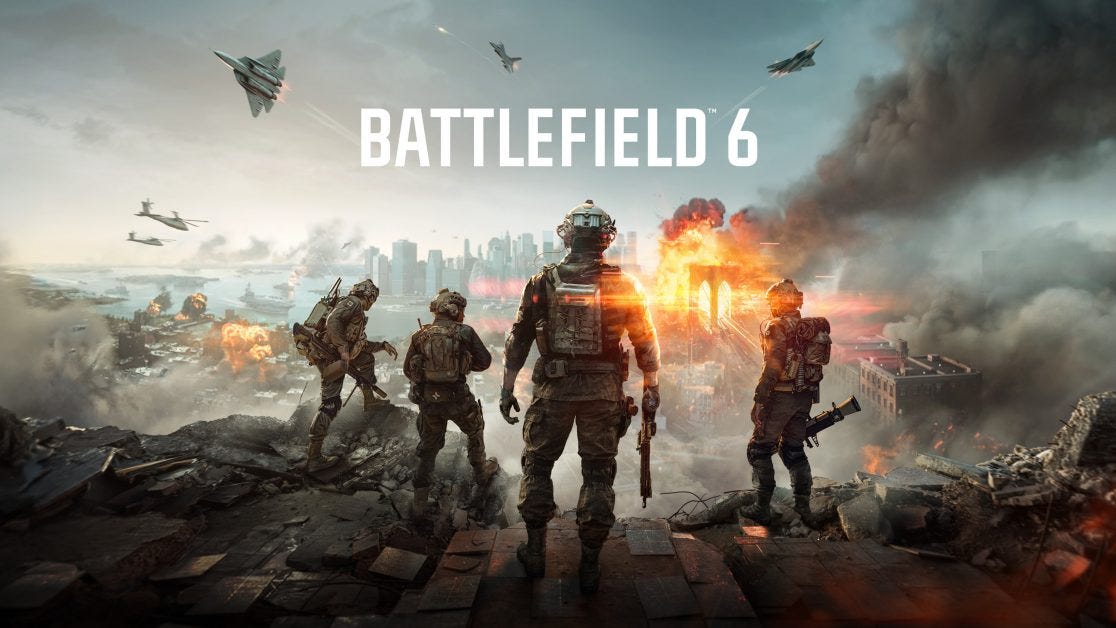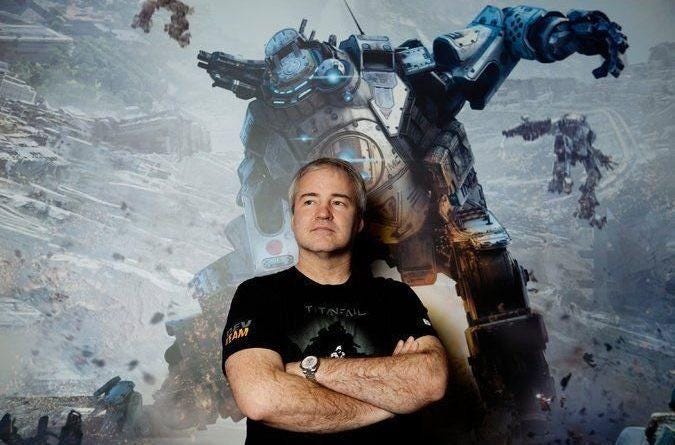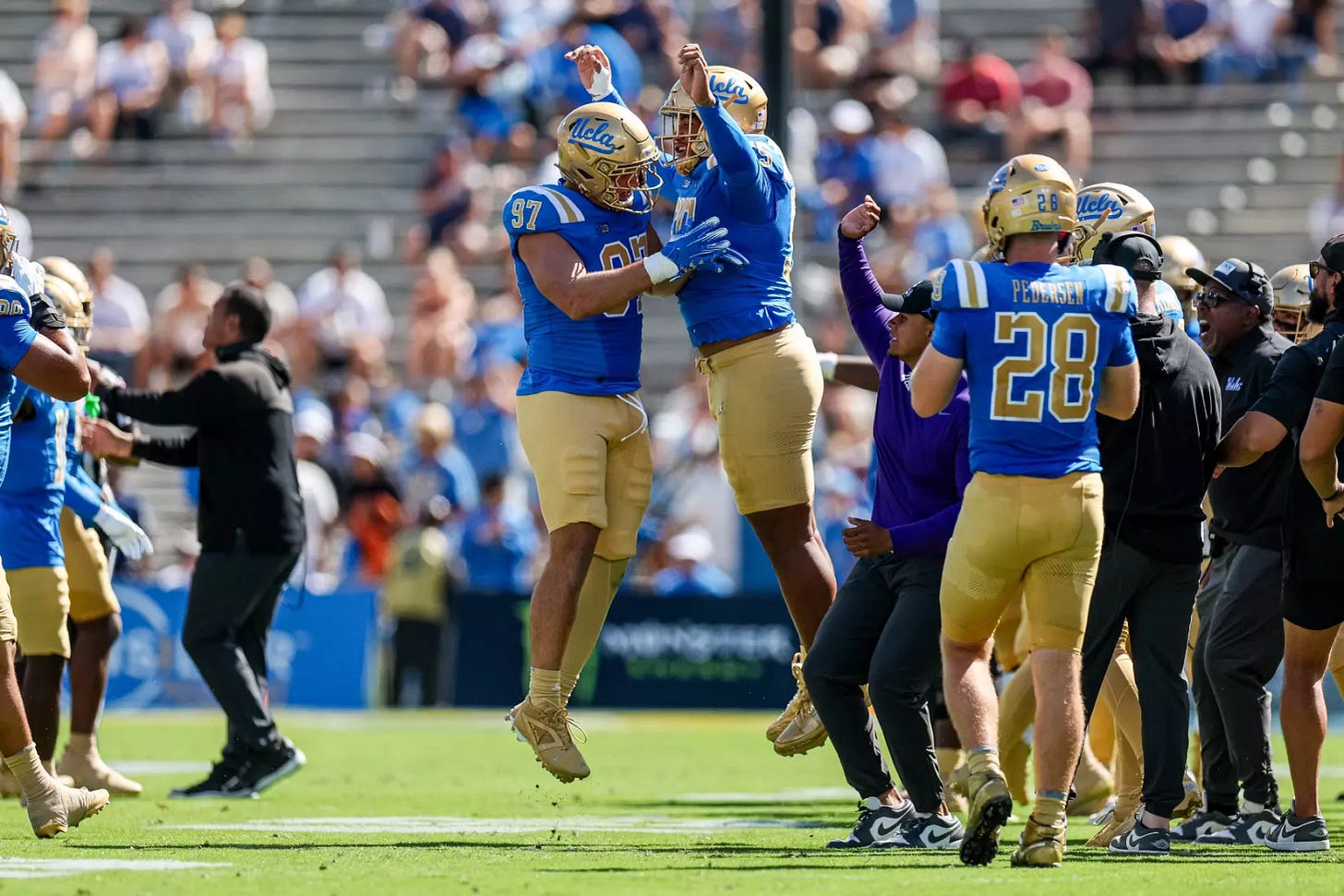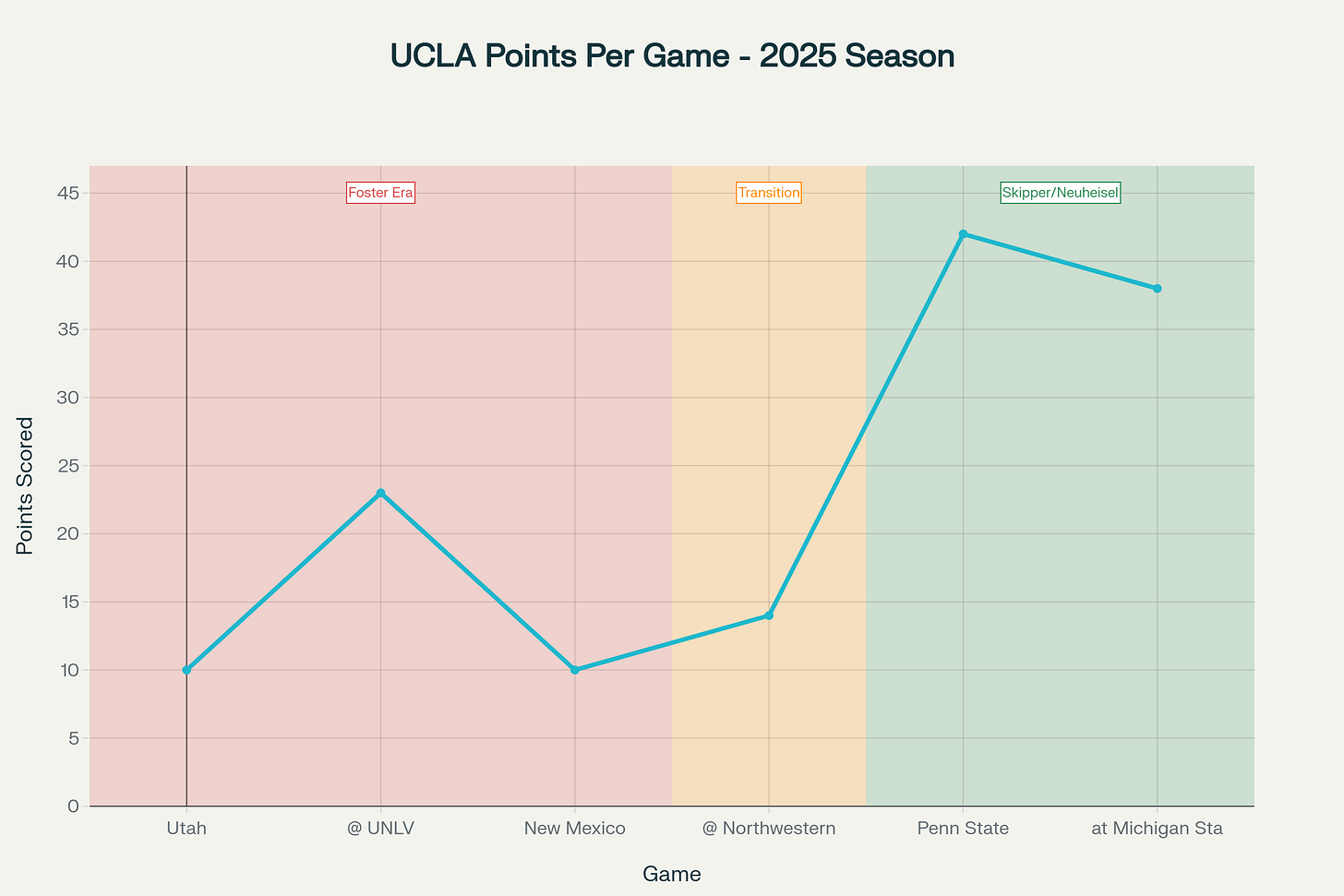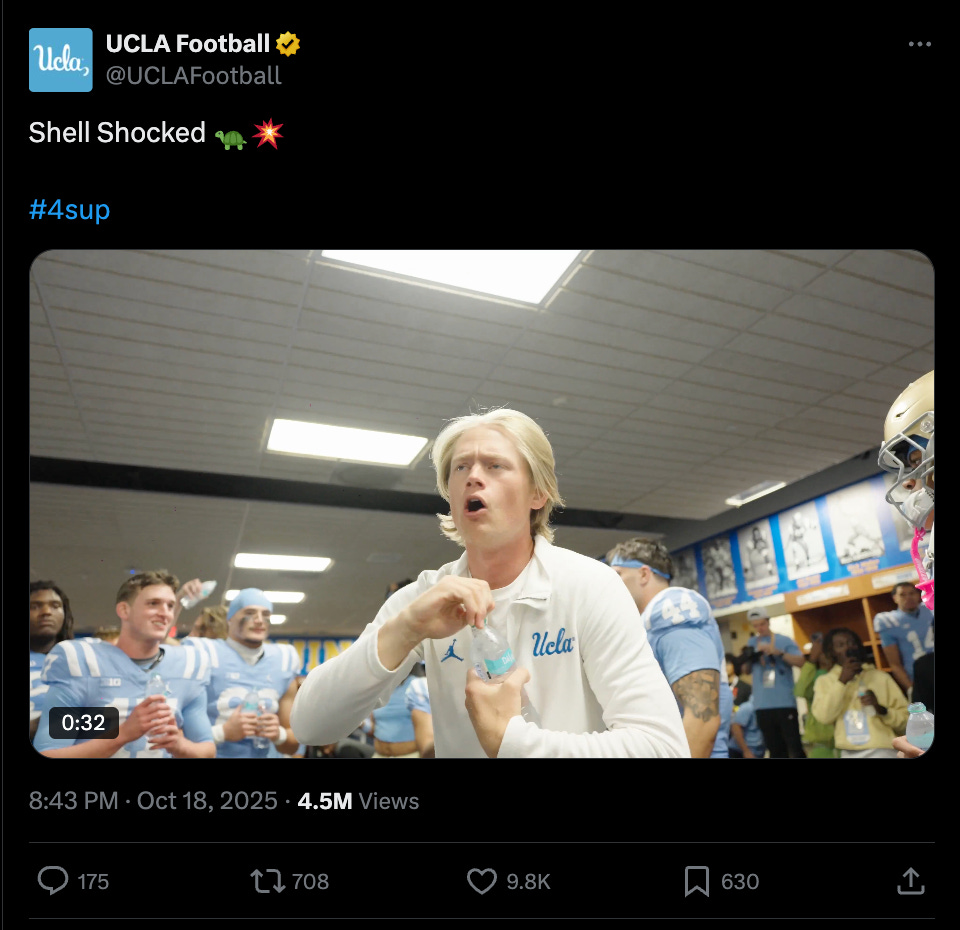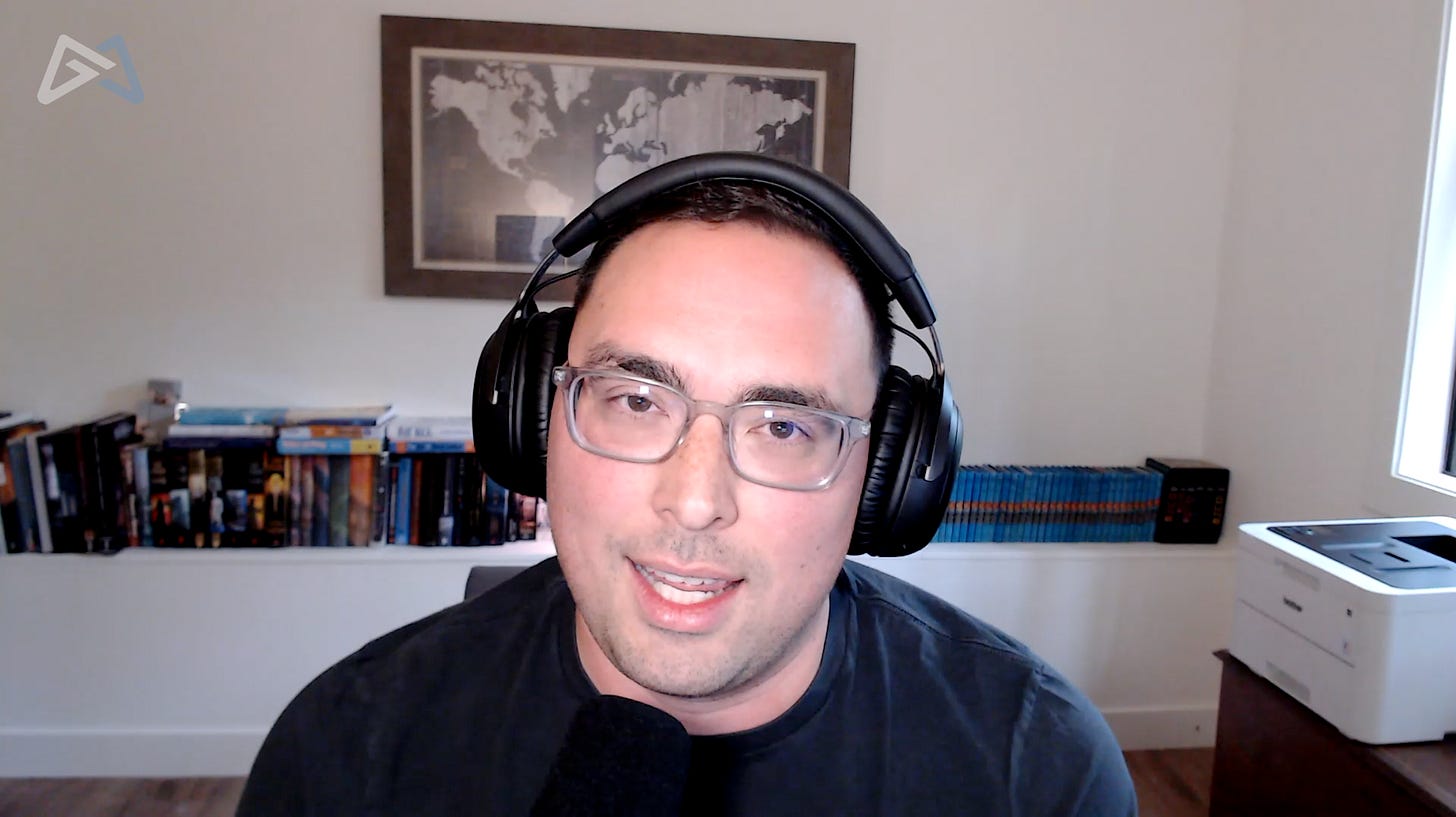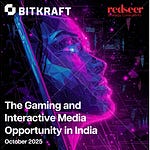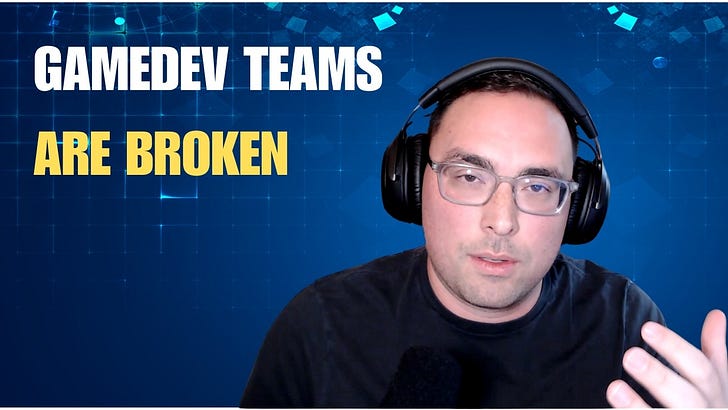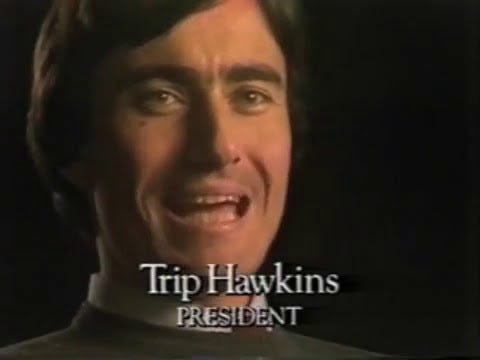Welcome to the GM MAG Newsletter.
This week, we’re focused on the single most powerful and most expensive variable in game development: Leadership. It’s the “alpha” that can turn a franchise-killing disaster into a record-breaking launch, or a failing team into a high-performance unit, all with the same people.
We have a packed episode. In this week’s MAG, we cover:
Macro: The Battlefield 6 redemption story. Selling over 7 million units in its debut, this launch proves blockbuster demand is back. We break down the “Vince Zampella effect” and the focused, humble AAA model that made it work.
Alpha: A must-hear case study from UCLA Football. We explore how a mid-season leadership change—with the exact same players —flipped a 0-4 disaster into a 3-0 powerhouse by fixing the core strategy. How does this apply to your game team?
GameDev: An excerpt from our chat with veteran producer Chris Casanova. He explains why your “craft-based” silos (art, eng, design) are killing your project and how to swap to “outcome-based” teams for better alignment and velocity.
→ Listen on Spotify, Apple (More Gamemakers content on YouTube)
Updates & Corrections:
Two updates/corrections from the last episode of MAG: The Economics of the EA Acquisition: Lessons in M&A for Game Executives | MAG #6
EA Saudi PIF Acquisition Focus on Cost Cutting: In the last episode of MAG, I basically reinforced the consensus view from Bloomberg, Financial Times, Game Developer, and other publications that suggested that Silver Lake’s involvement and looking at operational efficiency by comps suggest we should expect “significant cost-cutting measures.” Based on a further discussion with Matthew Kanterman and Chris Petrovic on this topic, I have revised my view that: 1. While there may be some cost-cutting, it likely will not be significant as many think, despite Silver Lake’s involvement, and 2. The comparison of FCF/(# employees) of EA to others is not apples to apples.
Copy, Improve, Innovate Framework Credit: Although Zynga is often credited and often takes the credit for the concept of traditional/improve/new in game design/development, shout out to Phillip Black for finding the original source: Sid Meier.
Sid Meier in Ars Technica interview in 2014:
“Meier said Firaxis has adopted a “rule of thirds” for new Civilization entries: “one-third traditional gameplay, one-third is improved from the last version, and one-third is brand new.”
Top 3 News
Battlefield 6 Sells 7M+ at Launch (Reuters): EA’s flagship shooter moved more than seven million copies in its debut stretch, giving the newly private company a strong early signal on franchise health ahead of the holidays. Big for AAA pipeline confidence and Battlefield’s live-ops runway.
Nintendo ramps up Switch 2 production to 25 million units by March 2026 (Bloomberg): Nintendo increased Switch 2 production targets to 25 million units by March 2026, exceeding analyst estimates of 17.6 million. Early sales are tracking 77% ahead of the original Switch, making it Nintendo’s fastest-selling console since its June 5, 2025 launch.
Arc Raiders playtest reaches 185,000 concurrent players on Steam alone (PC Gamer): The extraction shooter Arc Raiders hit over 185,000 concurrent Steam players during its final pre-release playtest, ranking fourth on Steam’s most-played list. This signals strong anticipation for the October 30 launch, with actual player counts likely much higher across Epic, PlayStation 5, and Xbox Series X/S.
1️⃣ Macro | Battlefield 6: The Western AAA Redemption Story
After years of doom-posting about Western AAA being dead, Battlefield 6 just proved everyone wrong.
The Numbers That Matter
7+ million units sold in first 3 days (biggest franchise launch ever)
747K peak CCU on Steam (4x previous franchise record, EA’s biggest Steam launch)
Went from 4.2M units (BF 2042) to 7M units (BF 6) at launch
172 million matches played opening weekend
15 million hours watched on streaming platforms
For context: Battlefield 2042 was considered franchise-killing. It dropped from 100K concurrent players to 5K within months. EA stock tanked. Players revolted.
So what changed?
The Turnaround Formula
Three and a half years of focused development broke down into:
1. Leadership That Matters
EA brought in Vince Zampella to oversee Battlefield. This guy co-founded Infinity Ward (Call of Duty), built Respawn (Apex Legends, Star Wars Jedi), and has a 20-year track record of shipping hits. When Vince signs on, quality follows.
2. Coalition Model With Clear Pillars
Rather than chaos across studios, each got specific outcomes:
DICE: Core Battlefield DNA, multiplayer foundation
Motive: Single-player campaign (addressing BF 2042’s biggest complaint)
Criterion: Vehicle combat and systems (their specialty)
Ripple: Battle Royale mode
Each studio focused on what they do best, with explicit accountability for their pillar.
3. Back to Basics
They stopped chasing trends and returned to Battlefield DNA:
✅ Four classes (assault, engineer, support, recon)
✅ 64 players (not trend-chasing 128)
✅ Single-player campaign
✅ Tactical squad play and massive destruction
❌ No more specialists
❌ No more broken launches
4. Battlefield Labs: Community in Development
They created an NDA community program that let real players test pre-alpha builds and provide feedback while there was still time to fix things. This wasn’t marketing—this was product development.
5. Delayed Until Ready
Originally slated for 2024, EA gave it another year. Rare for them, but it paid off massively.
Why This Matters for Western AAA
For years the narrative has been: “Western AAA is too bloated, too risk-averse, too broken. Chinese studios are eating our lunch.”
Battlefield 6 proves: Western AAA can still work if you execute well.
The lesson isn’t “bigger budgets” or “more people”—it’s:
✅ Give games time
✅ Bring in proven leadership
✅ Specialize production with clear outcomes
✅ Listen to your community
✅ Don’t chase trends—nail your core DNA
✅ Polish before shipping
Vince Zampella didn’t throw more money at this. He set vision and held teams accountable. That’s the anti-bloat model that works.
One More Thing: Vince Zampella is EA’s Secret Weapon
If you don’t know who Vince is, here’s the highlight reel:
Infinity Ward Era (2002-2010)
Call of Duty (2003)
Modern Warfare (2007) - redefined modern military shooters
Modern Warfare 2 (2009) - 25M+ copies, bestselling game of its generation
Respawn Era (2010-Present)
Titanfall franchise
Apex Legends - 100M+ players, $2B+ lifetime revenue
Star Wars Jedi: Fallen Order - 10M+ copies
Star Wars Jedi: Survivor
Now Vince oversees all EA shooter franchises as Group GM:
Battlefield
Apex Legends
Rumored Star Wars FPS project
Star Wars Jedi series
Hot take: Vince Zampella might be the most valuable executive at EA—more valuable than CEO Andrew Wilson. EA is a hits-driven business, and Vince is a hits machine.
If I’m the Saudi PIF (EA’s new private owner), I’m doing whatever it takes to keep Vince happy.
2️⃣ Alpha | Leadership: The Ultimate Force Multiplier
We obsess over budgets, talent, IP, and market trends. But what if the biggest alpha is who’s leading and how they lead?
The Navy SEAL Story You Need to Know
In Jocko Willink’s Extreme Ownership, he recounts a story from SEAL Hell Week training:
Boat Crew 6 consistently finished last
Boat Crew 2 always won
Instructors swapped the leaders
What happened? Boat Crew 6 went from last to first. Same people. Different leader.
The takeaway: Leadership can be a binary 0-to-1 outcome. The difference between total failure and massive success often isn’t resources—it’s leadership.
Case Study: UCLA Football’s Mid-Season Miracle
Now let’s talk about a real-world 2025 example that just happened.
The Setup:
UCLA football hired DeShaun Foster as head coach—UCLA alum, former NFL player, local hero. But he’d never been a head coach before.
The Disaster (First 4 Games):
Record: 0-4 (zero wins, four losses)
Lost to Utah 10-43 (33-point blowout)
Lost to UNLV, New Mexico (sub-tier programs)
Averaging 14 points per game on offense
Giving up 31 points per game on defense
Players looked lost, demoralized, no fight
What Was Wrong?
Wrong scheme for personnel: Foster ran a pro-style power running offense. But UCLA had a mobile QB (Nico Iamaleava from Tennessee), an undersized speed-focused roster, and a weak O-line. They were forcing a power scheme on a team built for speed and space.
Overcomplicated play-calling: Too many formations, pre-snap adjustments, shifts. Players were thinking instead of playing.
No accountability: Soft culture, no consequences for mistakes, no standards.
Wrong defensive philosophy: Bend-don’t-break soft coverage that gave up death by a thousand cuts.
The Mid-Season Shake-Up:
After 0-4, UCLA’s AD made a move you almost never see in college football: fired the head coach mid-season.
Promoted Tim Skipper (defensive coordinator) to interim head coach
Brought in Jerry Neuheisel as new offensive coordinator (former UCLA QB, spread offense expert)
Same roster. Same players. Same quarterback. Only thing that changed: leadership, scheme, philosophy.
The Turnaround (Next 3 Games):
Record: 3-0
Beat #7 Penn State 42-37 (top 10 upset)
Beat Michigan State, Maryland
Went from 14 PPG to 33 PPG on offense
Went from 31 PPG to 22 PPG on defense
Total yards jumped from 250 to 425 per game
Players had energy, confidence, clean execution
What Changed?
1. Scheme Fit
Neuheisel implemented a spread tempo offense that matched the roster:
RPO (run-pass option) plays for the mobile QB
Faster tempo, simpler play-calling
Utilized speed and space advantages
2. Brutal Accountability
Skipper instituted clear standards:
Don’t execute in practice? You don’t play in games. Period.
Miss assignments? Benched.
Execute well? Publicly praised, more responsibility.
3. Crystal Clear Roles
Every player knew exactly what was expected:
“You’re the starting linebacker—you’re the QB of the defense”
“You’re backup corner—your job is special teams at 100%”
No ambiguity. No confusion.
4. Restored Belief
Foster had lost the locker room. Skipper came in and said: “You guys are talented. We can beat anybody. I believe in you.”
When players believe, they play differently—faster, harder, with confidence.
The Alpha Insight
Same people. Different leadership. Different strategy. Infinite improvement.
This is as true for your game studio as it is for UCLA football or Navy SEAL boat crews.
Questions You Should Ask Right Now
If you’re a studio lead, answer these honestly:
Am I using my people well, or forcing them into roles that don’t fit their strengths?
Is my production model adapted to my team, or am I using a scheme that doesn’t work for us?
Am I focused on fundamentals, or chasing flash without nailing basics?
Am I adaptive, or rigidly sticking to a plan that’s clearly not working?
Do I have accountability and belief, or is my culture too soft?
The brutal reality: The games industry is in crisis. Layoffs everywhere. Studios closing. Budgets out of control. Games flopping.
Yes, the industry is hard. Yes, the environment is difficult.
But that’s exactly why leadership matters most right now.
You can’t fix bad leadership with more money or more people. You fix it with better leadership and better strategy.
UCLA proved a 0-4 team can fix everything in one week. Battlefield 6 proved a franchise-killing disaster can become a record-breaking success in one dev cycle.
Call to action:
Invest in your leaders. Train them. Hold them accountable. If they’re not performing, replace them.
If you ARE a leader: be adaptive, be aggressive, simplify, focus on fundamentals, make bold strategic pivots when necessary.
Because if you get leadership and strategy right, everything becomes possible.
3️⃣ GameDev | Structure Teams to Win: The Outcome-Based Model
For this section, we’re featuring insights from Chris Casanova, veteran producer with experience at Microsoft/Xbox, Mojang, Relic, and High Pixel Studios.
Chris wrote a fantastic article called “Structure Teams to Win” that addresses a root cause of failure in game development: bad organizational structure.
The Problem: Craft-Based Silos
Most studios organize by discipline:
All designers in one team
All engineers in another
All artists in a separate group
This creates:
❌ Constant handoffs between teams
❌ Games of telephone that lose intent
❌ Delayed communication loops
❌ “Throwing specs over the fence” mentality
❌ Lack of ownership over outcomes
The Solution: Outcome-Based Teams
Instead of organizing by what people do, organize by what needs to be built.
Example: Procedural Worlds Team
Rather than having designers, engineers, and artists split across different silos working on “procedural generation,” you create ONE cross-functional team with a specific mission:
Mission: “Every new world seed feels fresh, readable, performant. Traversal and discovery naturally surface points of interest, resources, and risks.”
Team Composition:
Designer (world generation logic)
Engineers (procedural algorithms, performance)
Artists (biome visual variety, readability)
All focused on ONE outcome
Measurable Goal: “Biome novelty per hour” - players experience something new within X minutes.
Why This Works:
✅ Clarity: Everyone knows exactly what they’re building and why
✅ Ownership: One team owns the entire outcome, not pieces of it
✅ Speed: No handoffs, no waiting for other departments
✅ Specialization: Team builds deep expertise in their domain
✅ Accountability: Success or failure is clear
Key Principles
1. Keep Teams Immutable (Mostly)
Don’t constantly change the mission or composition. Let teams:
Build excellence in their area
Develop strong relationships
Avoid constantly re-forming and re-storming
2. Arm Teams to Win
A football team of only quarterbacks would get destroyed. Similarly, your team needs the right mix of skills to execute their mission.
Ask: Can this team actually deliver on what we’re asking them to do?
3. Align to Product, Not Process
The team structure should reflect the product you want to build, not just the functional disciplines you hired.
The Sports Analogy
Imagine fielding a football team with only quarterbacks. You’d get wrecked.
Outcome-based teams are like having:
QB (designer)
O-line (engineers)
Receivers (artists)
Running backs (technical artists)
All working together toward ONE goal: moving the ball down the field.
Practical Takeaway
If you’re structuring (or restructuring) your studio:
Identify core outcomes your game needs to deliver
Build cross-functional teams around each outcome
Give each team clear ownership and measurable goals
Staff teams with the skills needed to fully execute
Keep teams stable so they can build mastery
This is a fundamental shift from “we have a design team, an engineering team, an art team” to “we have a combat team, a progression team, a procedural worlds team”—each fully equipped to deliver their outcome.
Wrapping Up
Three big ideas this week:
Battlefield 6 proves Western AAA can still dominate with focused execution, proven leadership, and respect for community + fundamentals
Leadership is the highest-leverage alpha you can find—same people, different leader, completely different outcomes
Outcome-based teams crush discipline silos because they own entire features end-to-end, not disconnected pieces
The full conversation with Chris Casanova drops soon as a special episode—we go deep on team size, psychological safety, and a complete org chart for an AA shooter. Keep an eye out for it.
Please like, share, and comment. It really helps us grow.
Catch you next week, GameMakers. 🎮






